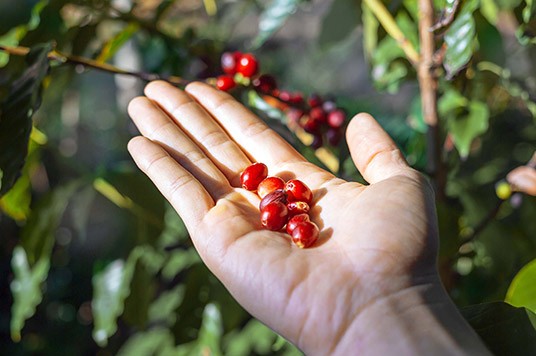Harvesting after growing indoors
When your plant has flowered for a while, you will notice things starting to change. Fruit will start to form and will change colour. So how do you know that it’s time to harvest? And what about all those other questions: should I flush, is there a right time of day to do it and how do I harvest in the first place? We’re going to answer these questions about harvesting in this topic.

When can I harvest?
Obviously, the first cue that harvest time might be close is the presence of big ripe looking fruit. At some point, the yield won’t be getting bigger anymore. That’s a good sign that your plant is ready for harvest. But you don’t want to harvest too early. Many plants will still increase the density and quality of the fruit, even though you can’t see it on the outside. Apart from the apparent growth of fruit, you need to look for other clues. Many plants will start to discolour as they reach the end of bloom. Leaves will start to go yellow for example. This is a clear sign that the life cycle of the plant is coming to an end and that fruit formation has reached its’ maximum. Don’t harvest too late or the fruit might start to dry out. These are rules of thumb, of course. But if your plants no longer increase fruit size and are starting to discolour, it’s time to get harvesting.
Should I flush my substrate before the harvest?
Many growers like to flush their substrate before the harvest. It’s a bit of grower folklore that flushing the substrate for a week, with at least double the normal amount of water, will clear the surplus nutrients from soil and plant. This is said to increase the purity of the harvest. In truth, though, there is no scientific proof of the effectiveness of flushing.
Regardless, if you like the practice, we won’t argue. Try a twostep technique: give water until the substrate is soaked through and wait a few minutes. Then soak it again. You can use your typical method for the watering, like a watering can. Proponents of flushing swear by this technique.
Should I harvest in the morning or in the evening?
Growing indoors means morning and evening are artificial. It is best to harvest before the start of a light period, so before the lights come on in your grow room. If they come on while you’re busy, just turn them off and work by normal room lights. If you start before the plants get strong light, the quality of the yield will improve because the fruit isn’t flushed with plant saps yet. These aren’t bad for you, but they aren’t good for the taste of the end product.
Let’s get practical: how do I harvest?
Enough theory. Let’s talk about how to harvest. What do you need for harvesting and how do you do it? This is a difficult topic to discuss in general terms. There are as many ways of harvesting as there are different plants. Still, there’s a list of items that are always good to have handy.
Gloves. It’s always a good idea to wear gloves. This keeps your hands clean, but more importantly it keeps germs and dirt away from the harvest so your end result won’t spoil.
Scissors or shears. If you’re harvesting from plants that live multiple cycles it’s a good idea to use tools like scissors or shear to remove the fruit. Twisting or breaking it off my damage branches and weaken the plant for the future. On the other hand: if the plant is single cycle, you can also use tools to cut the whole plant off of the root ball. Take it to a larger room where it’s easier to remove the fruit. Remove the roots from a hydroponic substrate if you want to reuse it. Or simply get a new substrate.
Bucket or box. Seems unnecessary to mention, but you will need a backet, basket or box to hold your fruit. This is practical to take your yield into another space, where you can process it.
Do you need help with your (indoor) grow?
If you need help during your grow cycle? Ask for tips about your plant or nutrition. Use this link to get in contact with our Grow Experts at our Servicedesk. We also have online tools available to help you choose your Plagron grow style (Substrate Selector) and later the Grow Schedule Calculator for correct Plagron product combinations and dosage.

